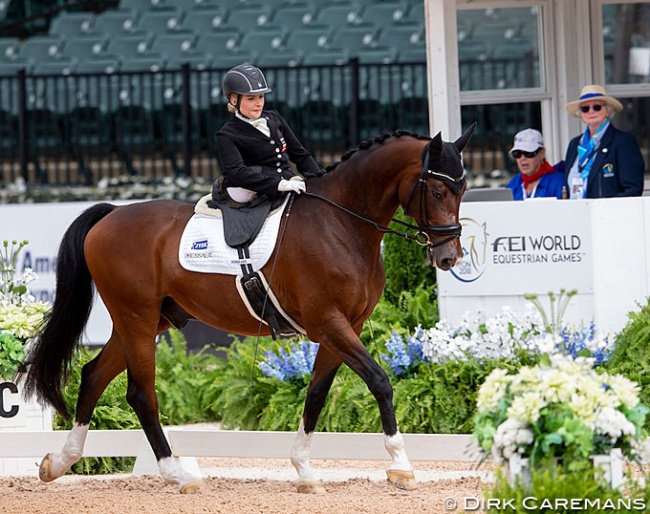
The FEI Para Equestrian Classification Research project began in 2018 and is led by a team of researchers from the University of Central Lancashire in collaboration with colleagues from Hartpury University and Prof Hilary Clayton (Sport Horse Science).
The FEI Para Dressage department is pleased to announce that the research team have published the “A scoping review of determinants of performance in Dressage”, the first outcomes from the first year of the FEI Para Equestrian Classification Research project.
FEI Classification Research Project
In Paralympic sports, all athletes are classified into sports classes based on the impact of their impairment on sports performance. In 2007, the International Paralympic Committee (IPC) published the IPC Classification Code, which amongst other things, mandated the development of evidence-based Classification systems across all Para sports.
The current FEI Para Equestrian Classification System is based upon the work of Dr. C. Meaden, which was developed in the 1990s and although it has been revised over the years, the FEI is, like many Para sports, prioritising the development of a strong scientific evidence-base for the system. As such, the FEI has funded a multi-year study, which aims to undertake a comprehensive examination of the methods used to classify eligible impairments and their impact on performance in Para Dressage. Research began in 2018 and is led by a team of researchers from the University of Central Lancashire in collaboration with colleagues from Hartpury University and Prof Hilary Clayton (Sport Horse Science).
Revision of the Para Equestrian Classification system
Revision of the current Para Equestrian Classification system requires an examination of the relationship between impairment and fundamental sport-specific activities, or “performance measures”. However, no studies have extensively investigated or defined the fundamental abilities required to successfully perform in Dressage.
This was addressed in the first year of the study by conducting a scoping review to identify, from the scientific literature, objective measurements of horse performance in Dressage and the functional abilities of the rider that may predict elite Dressage performance. The review highlighted a number of performance measures and will soon be published and shared on this page. A second scoping review was also conducted in the first year, which sought to identify objective, valid and reliable clinical tools for measuring eligible impairments in the later stages of the research project. This review is currently being written up for publication.
Stakeholders Input
In the second year of the project, athlete and stakeholder input was collected using semistructured interviews to provide further insight into key determinants of sport-specific performance and the impacts of impairment on performance in Para Dressage. This information will ensure that the views and experiences of Para stakeholders are considered and used to inform the development of the Classification system. A group of thirty Para Dressage athletes and stakeholders from various countries were interviewed between May and October 2019 and results are currently being written up for publication.
Quantify performance measures
As we embark on the final years of this research project, we aim to quantify performance measures, as defined from our first scoping review and expert opinion from our interview study, in Para Dressage and Dressage athletes, using biomechanical measures during ridden tests on a simulator. Clinical impairment measures, as defined from our second scoping review, will also be conducted and used to investigate the impact of impairment on performance in Para Dressage. This information will inform recommendations for an evidence-based, sport-specific Classification system for Para Dressage, which is in line with the IPC Classification Code’s mandate for evidence-based systems of classification. The FEI will soon be recruiting participants for this study.
Read: A scoping review of determinants of performance in dressage
Visit: FEI Classification Research Page